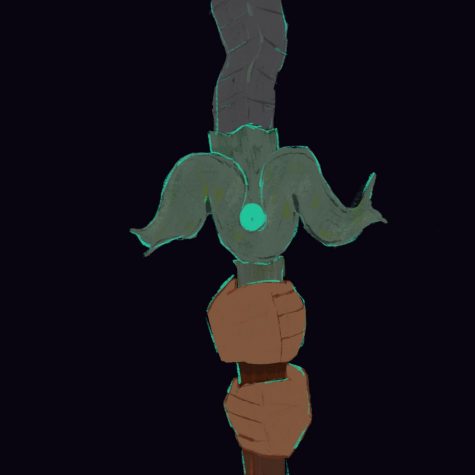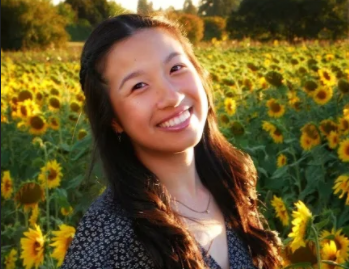Disney’s “Raya and the Last Dragon” sends timely message
April 21, 2021

Note: This article contains minor movie spoilers. Most plot elements discussed can be gathered from the trailer.
The arrival of Disney’s latest animated film, Raya and the Last Dragon, sends a multitude of timely messages. Set in the fantasy land Kumandra, the movie follows the eponymous heroine as she navigates trust between political enemies on her quest to track down the legendary last dragon and restore her broken world.
Perhaps the biggest cause of celebration with this film is that it is a landmark moment for Asian representation in both Hollywood and the media. After almost 90 years, Raya, the film’s protagonist, has become Disney’s first Southeast-Asian princess and is voiced by Kelly Marie Tran (Star Wars: The Rise of Skywalker and The Croods: A New Age), the first Southeast-Asian actress to lead an animated feature from the studio. The film also features a predominantly Asian-American cast, including Awkwafina as Sisu the dragon, along with Izaac Wang, Gemma Chan, Daniel Dae Kim, Benedict Wong, Sandra Oh, Thalia Tran, Lucille Soong and Alan Tudyk.
Furthermore, the movie’s setting was said to have been inspired by the various cultures of Southeast Asia. During production of Raya and the Last Dragon, Disney conducted research on Asian cultures by having members of the production team travel to Laos, Indonesia, Thailand, Vietnam, Cambodia, Malaysia and Singapore (pre-pandemic) in hopes of making the film’s details more authentic, an approach that Malaysian screenwriter Adele Lim – best known for co-writing Crazy Rich Asians – and Vietnamese-American screenwriter Qui Nguyen thought was crucial.
“It’s clear that there are bits of Southeast Asia peppered through the film,” according to BBC.
Raya wears a hat that resembles a Salakot, a traditional headpiece in the Philippines. Her loyal sidekick — a pillbug, armadillo, and pug hybrid equivalent of “BB-8” — is a fun reference to a rickshaw. And her fighting technique is based off of Silat, a martial arts form practiced in Malaysia and Indonesia.
“I think we can’t undervalue the power of the fact that this is a Disney movie and the people that will be watching this movie by and large are families, parents with their children, seeing this kind of representation, and understanding what is possible,” actor Daniel Dae Kim who voices Chief Benja, said in a recent Disney+ virtual press conference. “I’m also thinking about all the children who will be seeing Raya for the first time and seeing an Asian strong female who kicks ass and becomes a queen. She’s on the path to becoming a ruler and she’s being groomed by her father to do that in a loving relationship. All of these things are such a positive portrayal… It’s exposure that brings understanding and that understanding is what changes perception. What this movie does on the scale of those things cannot be underestimated.”
But wait, there’s more! Besides setting a milestone in terms of Asian representation in the industry, Raya and the Last Dragon promotes reflection on what it means to unite for the greater good. In the last year, the world has not only been plagued by the COVID-19 pandemic, but also immense political polarization and despicable anti-Asian sentiment.
“Kumandra is an entirely, fantastical, fictional land, but it was very important to the filmmakers that the troubles that land faces and the journey that Raya goes on, the struggles she faces, are rooted very much in the real world; the problems that we’re facing in terms of division,” co-writer Lim revealed. “But it was particularly important that the way Raya goes about trying to solve this is also reflected in reality. It is not an easy thing. It is not just an easy byword that we’re just going to say the word ‘trust’ and magically hope it comes together. That it is something that you keep doing, even though you lose everything that’s important to you, even though you were betrayed, even though your heart is broken. That we have to keep reaching out because it is the only way we are going to be able to move forward in this world together. And particularly, with everything that’s been happening in this last year, the violence towards Asian Americans, seeing each other as the other, words have power and words have the power to paint people in a different light. They have the power to bring us together. So, hopefully, this movie is our word, and our message to the world of ‘let’s pull together.’”
It seems that the strong themes of trust and unity as well as love above hate presented in Raya and the Last Dragon couldn’t have come at a better time. The spotlight this movie brings upon Asian culture along with the movie’s important takeaways truly set it apart from other movies from the Disney princess franchise.
And although the movie itself is an animated fantasy, it teaches some invaluable lessons that can be applied to the real world, such as starting the conversation around racial equity and the culture of contempt in our fractured world.
Raya and the Last Dragon is in select theatres now and available on demand for $34.99 with a Disney+ streaming subscription.

